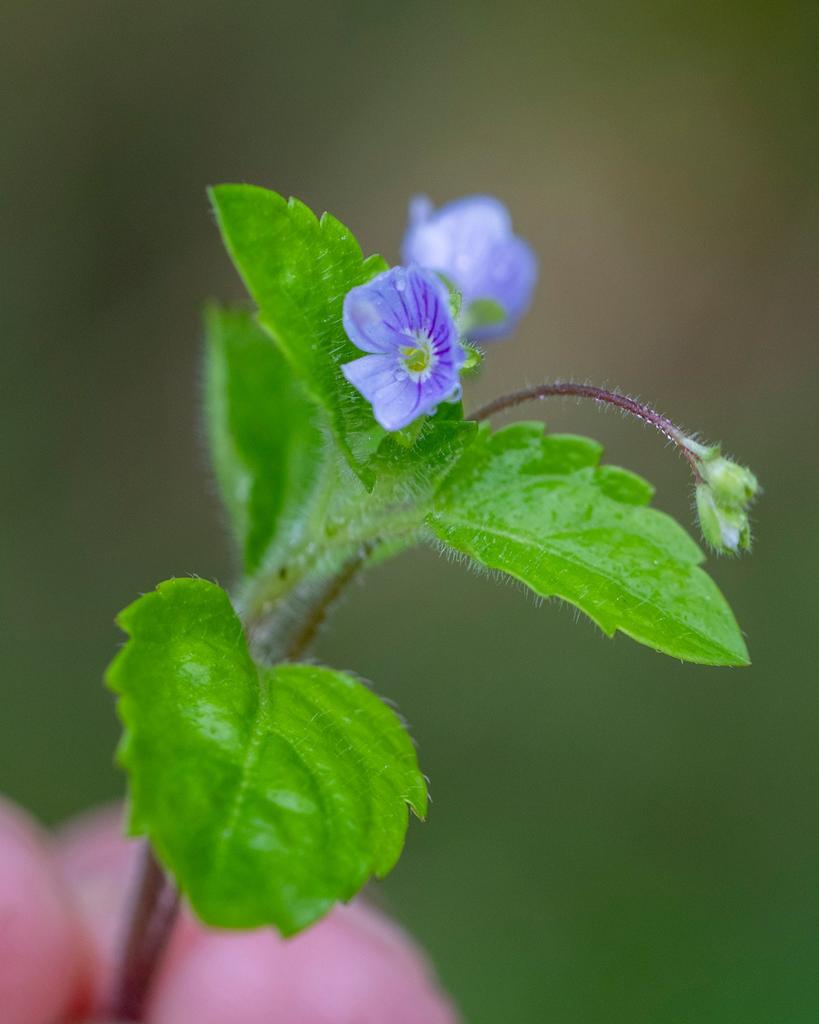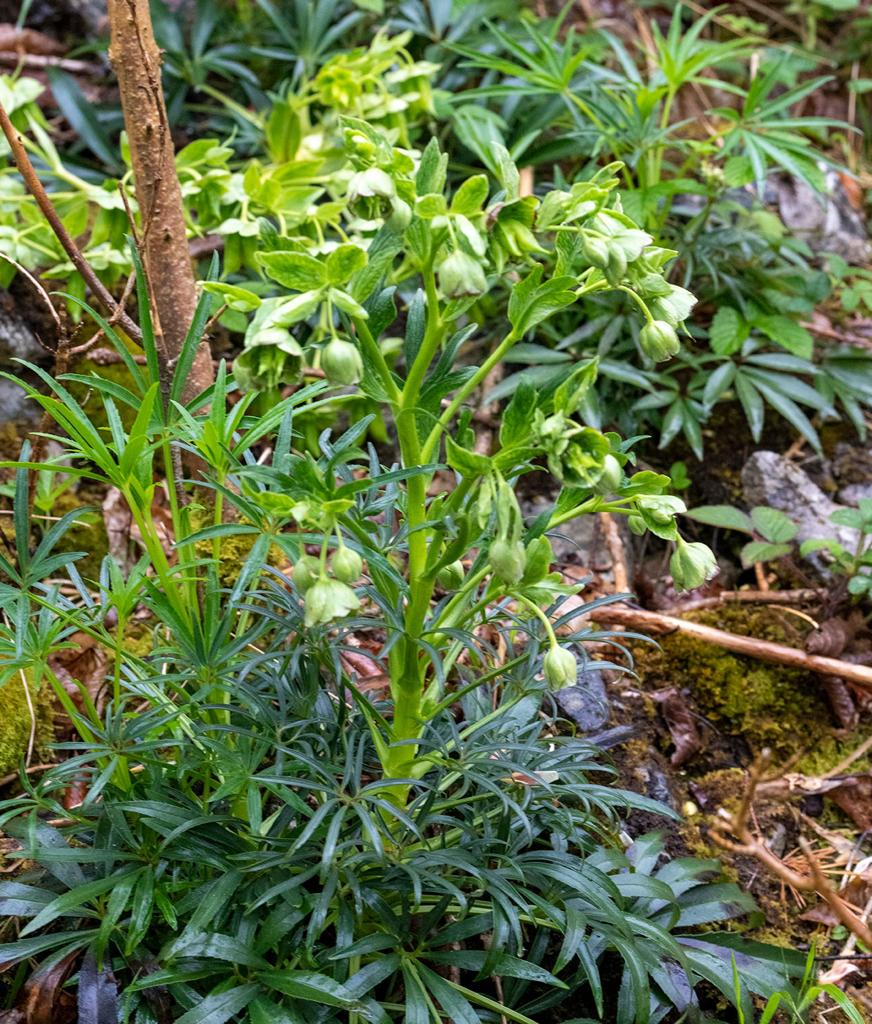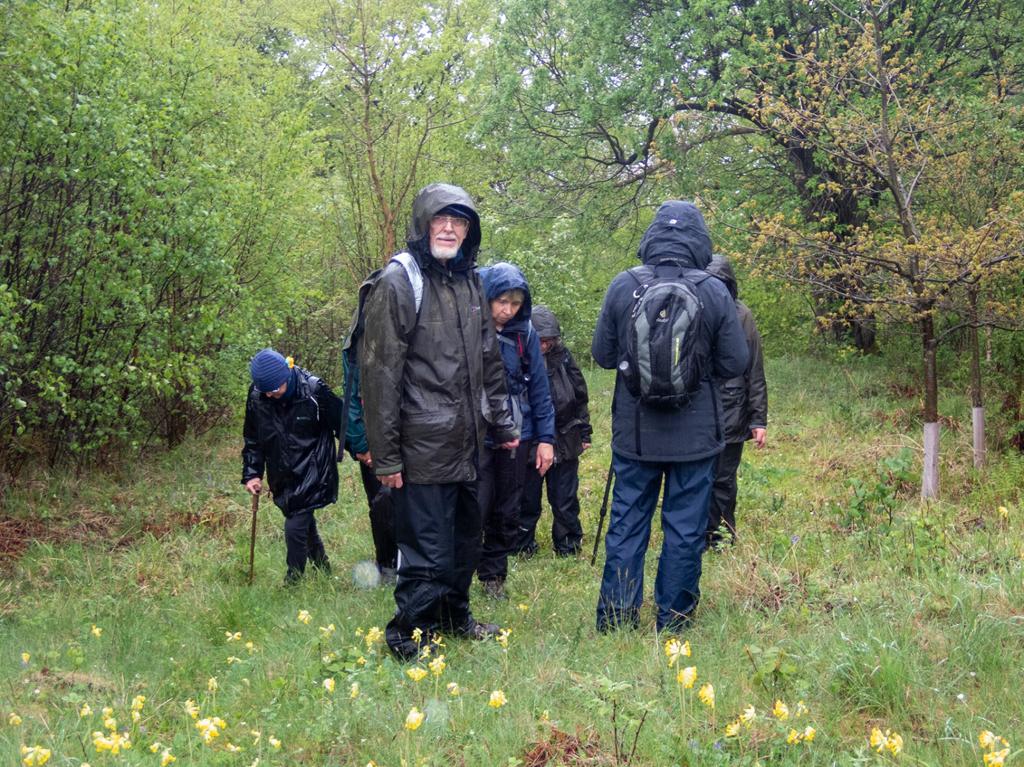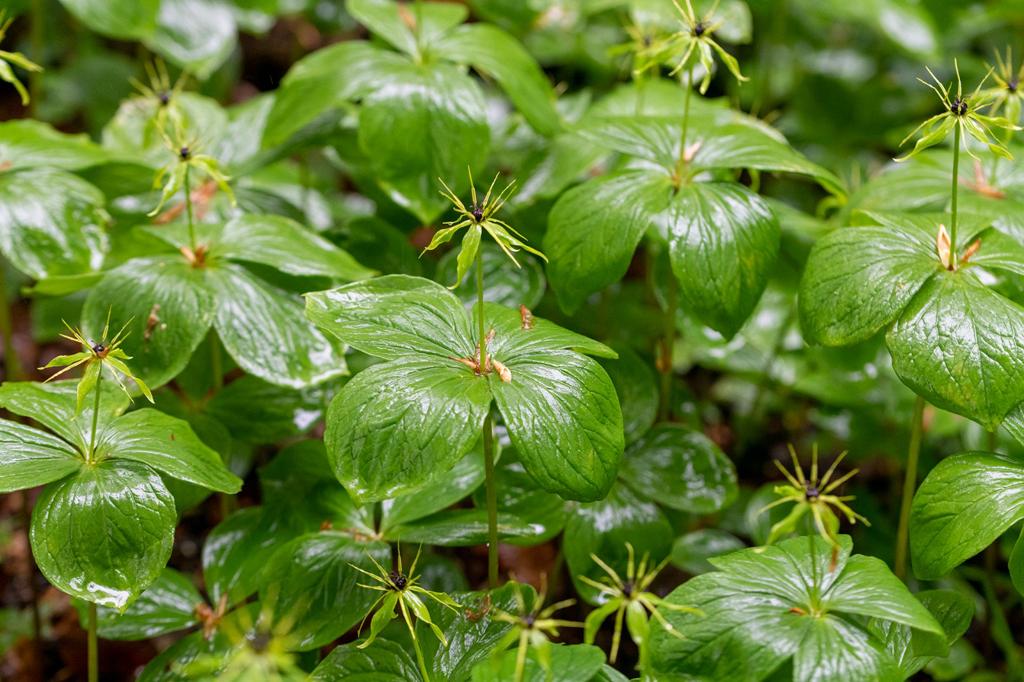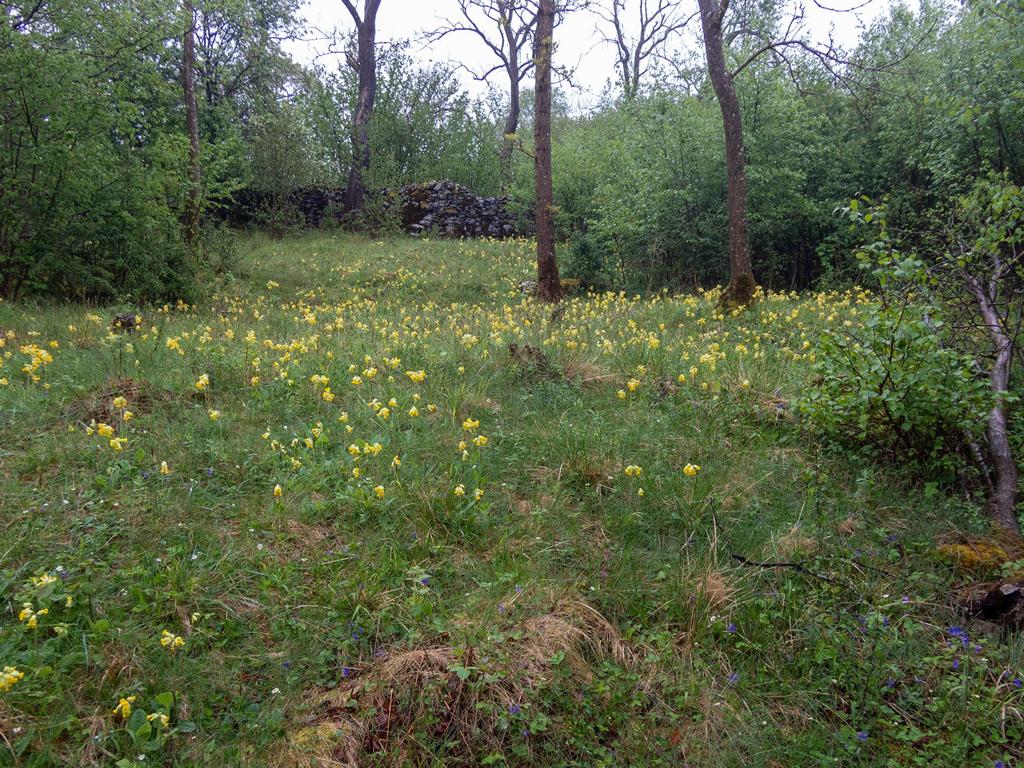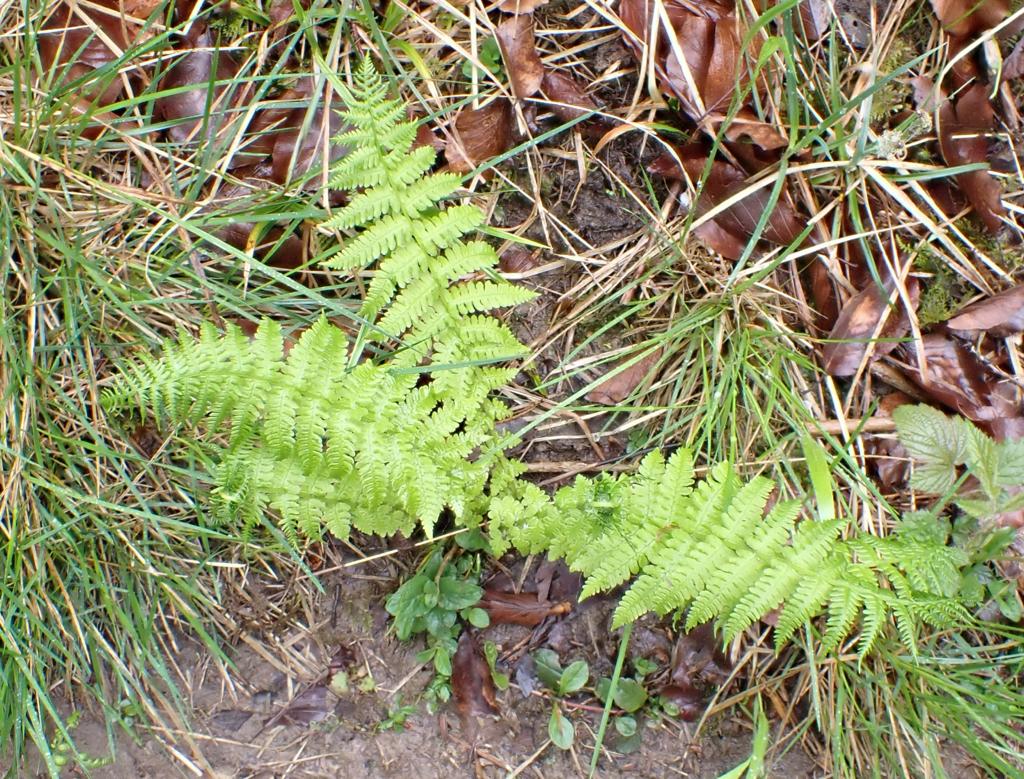The 12 naturalists assembled at the quarry car park included our leader, Bruce Brown, botanical recorder for Wharfedale Naturalists and Joe Bodycote of YWT; Bruce and Joe are both very much involved in the management of the wood, Bruce appears to know every tiniest path, stone and plant in the 80 ha Reserve.
No field trip that begins with a wood warbler and ends with a cuckoo could be a disappointment, and although the focus of the trip was botanical, we were throughout the day serenaded by woodland birds. Undaunted by the heavy rain, we listened as Bruce described the history, ecology and management of the reserve which is a SSSI for its rich flora and remnants of ancient woodland. The rocky limestone terraces make for thin soil, so heavy tree cover does not become established and the ground flora flourishes. Since YWT have owned it, most of the inappropriate conifers have been removed; the ash woodland which remains is particularly sympathetic to smaller plants as it does not develop a light-blocking canopy and indeed comes into leaf much later than most broadleaved trees. This was very evident in the areas where beech trees were growing, with completely bare ground underneath. Of course, the Ash Dieback disease is having a very serious effect on this, the largest area of broadleaved woodland in the Dales.
We followed Bruce along little rocky paths fringed with flowery vegetation, the ground often steeply sloping below so that we could see distant views of the Wharfe valley. The plant list at the end speaks for itself but some of the highlights include: a glade carpeted with Herb Paris; a beautiful spread of cowslips and cowslip hybrids with larger primrose-type flowers; the native Solomon’s-seal on a steep rocky slope with the white bells of the flowers just beginning to appear; the rare Stone Bramble and the spectacular Stinking Hellebore; the very local Limestone Bedstraw and various microspecies of Alchemilla including one unique to the site which is distinguished by long fine hairs adpressed to its leaf stalk. Another rarity was Alpine Cinquefoil, and, particularly attractive, the nodding florets of Mountain Melick grass. Bruce even managed to point out a single small specimen of Bitter-vetch, apparently the only one on the site!
We have rarely encountered so many new plants in such a short space of time. Bruce’s leadership was invaluable – without him we would have had no idea where to go or what to look for; we could not possibly retrace our steps now! The icing on the cake was the rain stopping for lunch and a suspicion of sun by the end of the day. Kerry’s notetaking was reduced to sodden fragments of paper but she has still managed to produce a full plant list. Many thanks to her for organising the day and to Bruce for his knowledge and enthusiasm!
Muff Upsall
